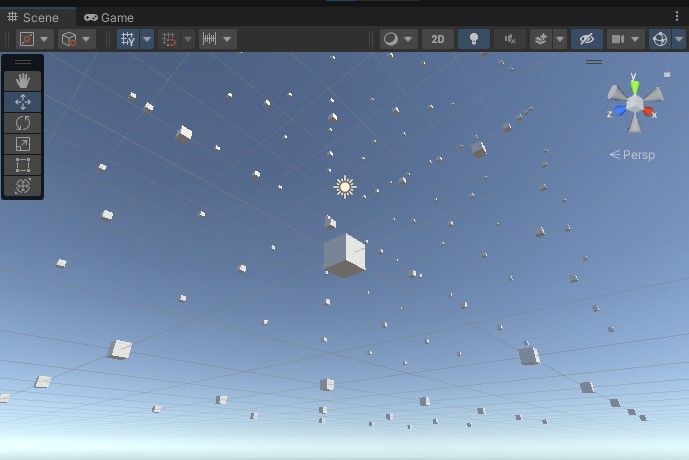ChatGPT by Open AI is an amazing chat bot. It can even come up with instructions and code for 3D tools like Blender, Unreal Engine or Unity.
Chatbot ChatGPT by Open AI for coding
Open AI’s ChatGPT is all over the place since its release 3.5 in late 2022. «GPT» stands for its «generative, pre-trained transformer» algorithm.
For my first test, I go all out and task the chatbot with providing me with a Python coding script for the 3D modeling tool Blender that creates an array of cubes in space.
Here’s the prompt I feed the chatbot:

And this is the chatbot’s response, including actual code that I copy and paste into Blender:

Once the script is copied into Blender’s scripting module, the renderer produces the desired array of cubes.

When I ask the chatbot to come up with the same for the 3D tool Unity, it produces the respective instruction including the C# script:

Which produces the respective visualization.
Below is Google’s «competing» result list:


Now, this offers all sorts of shortcuts for different tasks, think writing and debugging code or much simpler things like writing articles, emails and what not.
Apparently, the more specific the instruction, the more impressive the results.
I suggest you test the chatbot in your domain of activity. I’m blown away!
In the future, instead of asking Google for an instruction, I will first ask ChatGPT.
Here’s another example of ChatGPT’s superior service level when trying to achieve something in a software tool:

Google's LaMDA chatbot
It’s a shame that ChatGPT garners all the praise because allegedly Google offers an even stronger chatbot called LaMDA.
Potentially they better release it into the wild because users are very flexible. When Google first published their search engine in 1996, it felt like two weeks before nobody was using Altavista anymore.
«Let me Google that for you» did an amazing job at showing everybody just how much better Google’s new search engine was.
So from now on we may as well «chat things up» instead of googling them.
Inventor's dilemma: Google's "Kodak-moment"
With ChatGPT entering into ever more fields of application, e.g. powering Microsoft’s Bing search engine, Google will need to make up their mind:
- Stick with the «old» model of monetizing result lists and risk becoming obsolete
- Embrace the chatbot principle with direct answers instead of result lists and find a new monetizing model that may not make up for today’s revenues any time soon
Here are a few reasons why Google is holding back their own LaMDA chatbot
And here’s a New York Times write-up on Google rating ChatGPT a «Code Red» as of December 2022.
And here are six startups, that may end the days of search engines as we know them and put chatbots in place instead. Chatbots look poised to become the standard interface for human-machine interactions.
Much like described in Neil Stephenson’s sci-fi novel Snow Crash. In which he famously coined the term «Metaverse».